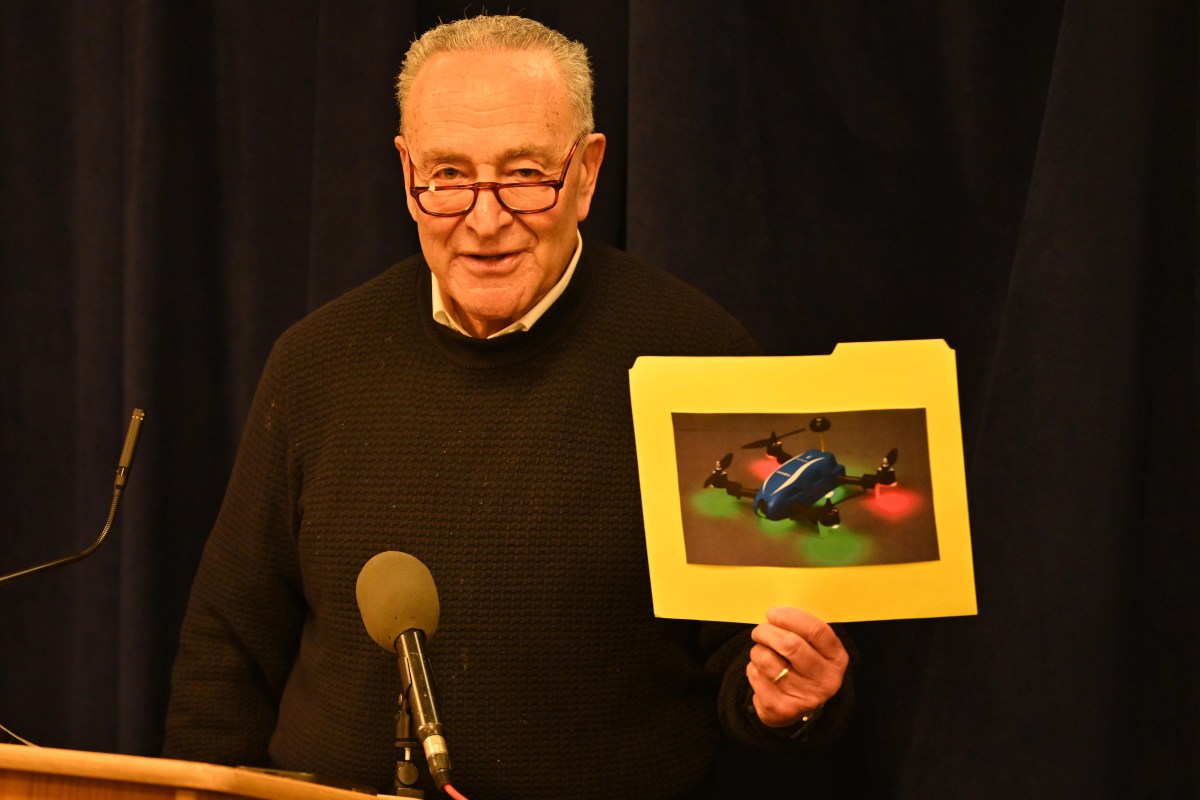Design Phase Starts For Ridgewood Plaza
Residents and business owners met last Wednesday, Apr. 3 at the Ridgewood Savings Bank on Forest Avenue for a workshop to form ideas for the public plaza slated to be built in the triangle where Stephen Street and Myrtle and 71st avenues meet in Ridgewood.

Ideas ranged from the practical to the fanciful-but a few overriding concerns seemed to crop up among many of the attendees.
After a presentation from the Myrtle Avenue Business Improvement District (BID), the Department of Transportation (DOT) and the landscape architects responsible for realizing the plaza’s designs, attendees formed breakout groups to discuss specific design elements they’d like to see included in the space.
There was a concensus that the plaza needs to attract pedestrians while preserving customer parking and space for delivery trucks.
Cathy Schmitt of Queens Wines and Liquor, who also lives on the block, said her priorities are as a business owner. She noted she was there representing owner Herman Hochberg.
Walter Maffei, an architect for business owner John Black, spoke for one breakout group and suggested adding Muni Meters to both sides of 71st Avenue adjacent to the plaza while removing paid parking elsewhere on the block. He said the shift would preserve customer parking while freeing up spaces for residents who live down the street.
“We have to look at what’s re- quired by users … what we’re getting and what we’re giving,” he noted.
Maffei and others proposed adding recessed parking along Myrtle Avenue on the plaza’s west end so trucks could make deliveries without jutting into the street.
He noted that FDNY access points can be used for temporary loading and unloading.
Access points at both ends of the plaza are required, according to DOT officials.
Foot traffic was also a major topic-the more people in the plaza, the more likely they will be to patronize nearby businesses. Several people suggested removing curbs so pedestrians could enter the plaza from any point.
Once passers-by are attracted, they need to be retained. Resident Brandon Zwagerman and Commu- nity Board 5 member John Maier spoke for their respective groups, and both pitched installing a barrier of trees along Myrtle Avenue to block automobile noise and create what Zwagerman called “an oasis.”
Maffei suggested deciduous trees, which would provide shade in the summer and more light in the winter. Umbrellas were another idea proposed to provide relief from the summer sun.
Maier said a chess boards would attract and retain people, noting residents already assemble there to match wits in the game.
“You’d have a ready group of people to populate [the plaza],” he said.
He said a drinking fountain would be an important feature, noting that an additional fountain for dogs would be ideal.
Emily Weidenhof, a DOT representative, told attendees the space could be used for public events, and the DOT has programs to fund and facilitate public art installations.
Attendees took up the idea, suggesting art exhibits and possibly a small stage. One group proposed a community bulletin board.
Public Wi-Fi was another concept roundly submitted by residents and business owners to make the plaza a destination.
Groups brought up ideas of erecting memorials and naming the plaza.
“Anything but ’71st Avenue Plaza,'” joked Zwagerman.
During the breakout, Maier suggested installing bike racks, especially in front of Mr. Chen, a Chinese restaurant whose delivery people often use bikes.
Hilary Gietz from the DOT said that was possible and that it doesn’t necessarily have to be part of the plaza project.
Safety was an obvious concern- attendees said they didn’t want to attract transients and drug dealers to the area after dark, so the groups discussed ways to light the plaza that would be effective while maintaining a visual appeal.
Kim Mathews, principal at Mathews Nielsen Landscape Architects, which is handling the design, said her firm uses a number of design elements to discourage unfavorable activities like sleeping or skating in the area.
In addition, the area will also be populated with temporary seating that can be changed or removed depending on locals’ needs, she said.
“What cannot happen is what happened to the park on Cooper [Drumm Triangle]” said Black, who owns Cream Restaurant. “But that’s not going to happen, because I’ll be here.”
Black stated he is pursuing an outdoor cafe license to give the location a bistro atmosphere.
The plaza is being built under a partnership between the DOT and the BID, according to Theodore Renz, executive director of the BID. The city has made funding available to build 50 such plazas city-wide, he said.
The BID applied for the plaza last year, and a temporary common has been constructed while plans are finalized, Renz noted.
Weidenhoff said the DOT will take a few months to review the results of the workshop before taking a second round of public input.
Renz said the project’s completion is about two years away.
Attendees told the Times Newsweekly they were happy to help shape the project.
Maffei commended the city for bringing the public into discussions about the plaza’s future, noting that many cities would steamroll residents or allow minimal input on designs.
Schmitt and Black said they are pleased with the process.
“The DOT is listening,” Schmitt said.
































